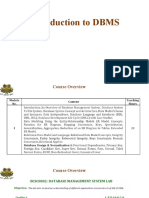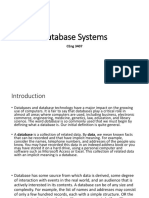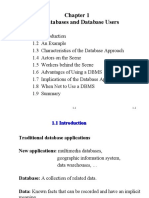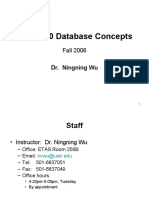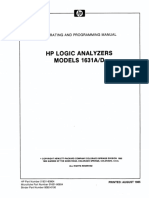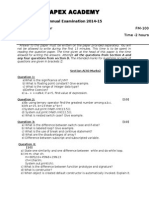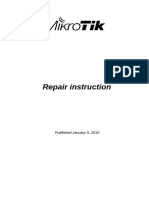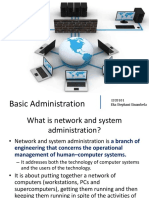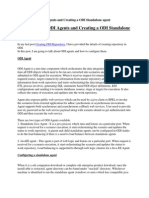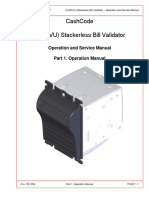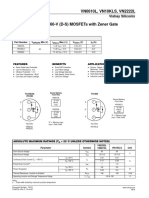0% found this document useful (0 votes)
32 views38 pagesChap1 Introduction To Database
Chapter 1 introduces databases, defining them as collections of related data and explaining the role of Database Management Systems (DBMS) in managing this data. It discusses the characteristics and advantages of the database approach compared to traditional file processing systems, emphasizing features like reduced redundancy, data integrity, and support for multiple user views. The chapter also highlights the importance of DBMS in providing security, efficient query processing, and backup and recovery mechanisms.
Uploaded by
ssrCopyright
© © All Rights Reserved
We take content rights seriously. If you suspect this is your content, claim it here.
Available Formats
Download as PPTX, PDF, TXT or read online on Scribd
0% found this document useful (0 votes)
32 views38 pagesChap1 Introduction To Database
Chapter 1 introduces databases, defining them as collections of related data and explaining the role of Database Management Systems (DBMS) in managing this data. It discusses the characteristics and advantages of the database approach compared to traditional file processing systems, emphasizing features like reduced redundancy, data integrity, and support for multiple user views. The chapter also highlights the importance of DBMS in providing security, efficient query processing, and backup and recovery mechanisms.
Uploaded by
ssrCopyright
© © All Rights Reserved
We take content rights seriously. If you suspect this is your content, claim it here.
Available Formats
Download as PPTX, PDF, TXT or read online on Scribd
/ 38
